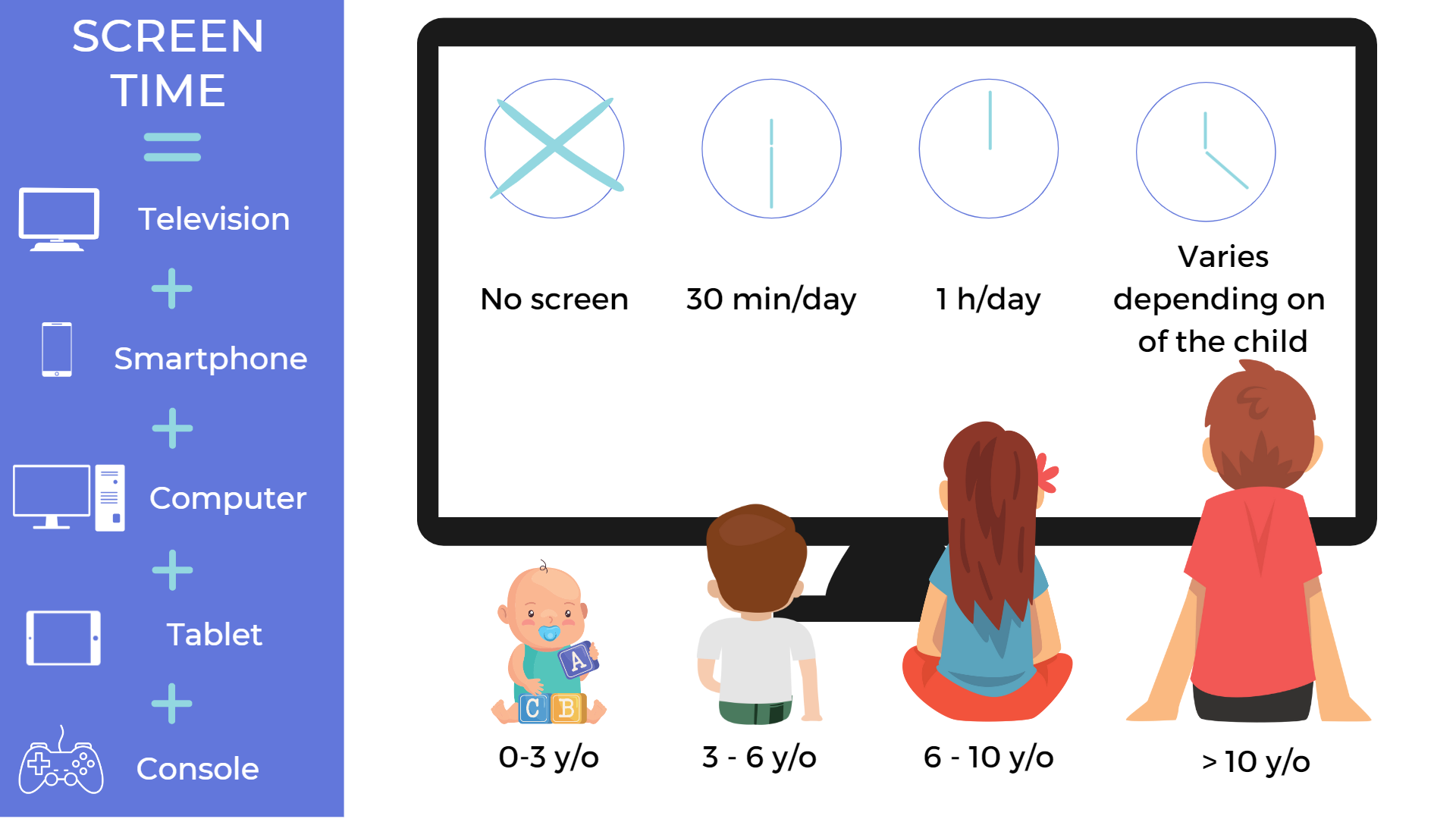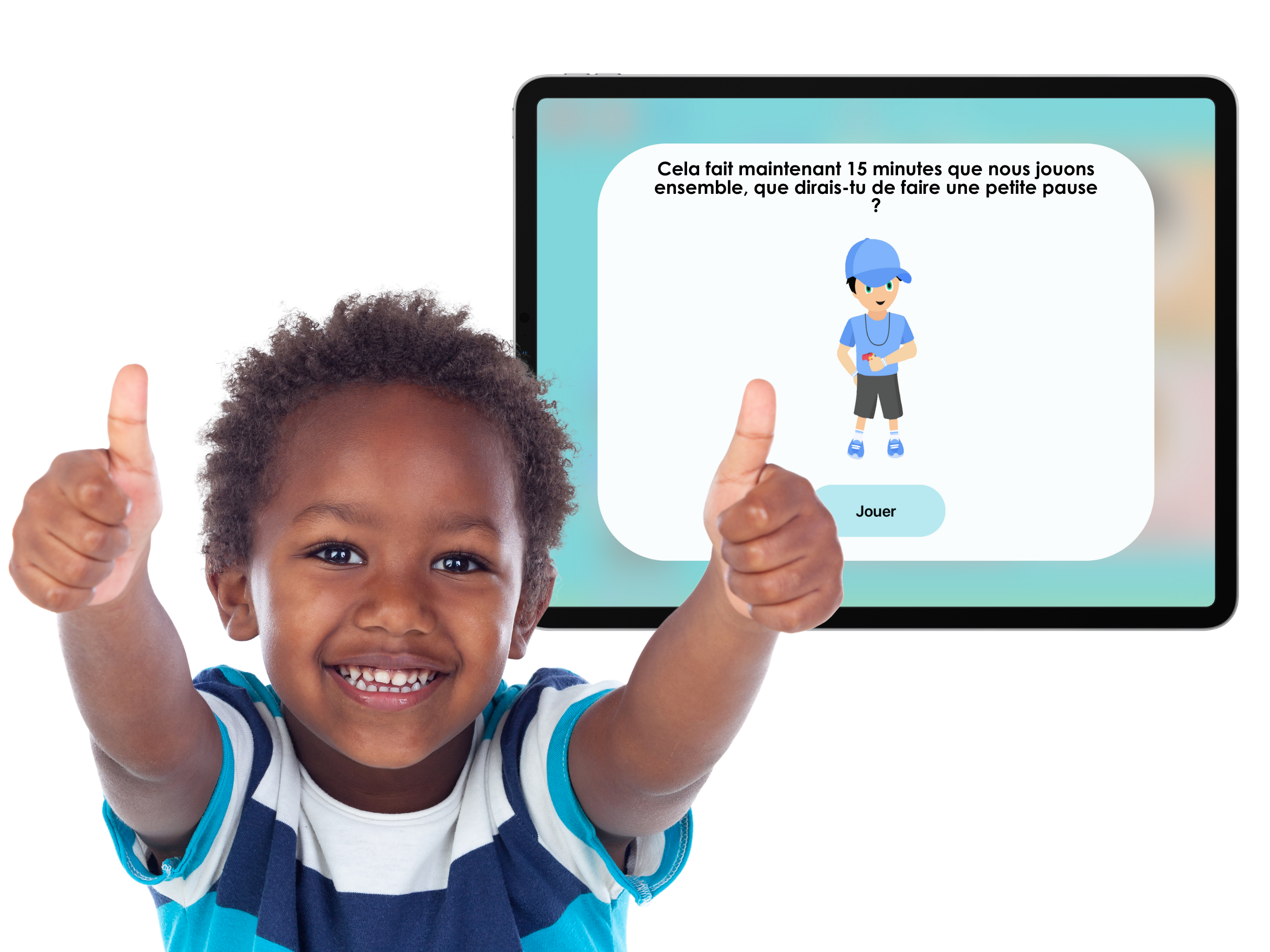Nowadays, the use of screens has become ubiquitous in the daily lives of children. Whether it’s homework, playing video games or watching videos online, it’s hard to completely disconnect. However, excessive use of screens can have negative consequences on the health and development of children.
That’s why it’s important to encourage children to take regular breaks from their screen use. With this in mind, there are several strategies parents can implement to help their children disconnect and enjoy other activities. In this article, we will explain the importance of breaks in the use of screens for children and then strategies to help parents guide their children towards a healthier and balanced use of screens, screen time by children and the consequences that this provides.
The importance of screen breaks for children
It is important to explain to children the importance of breaks in their screen use. Prolonged exposure to screens can lead to health problems such as headaches, vision problems, sleep disorders, obesity, posture problems and concentration difficulties. In addition, excessive screen use can also affect children’s social, emotional and cognitive development.
For example, children who spend too much time in front of screens may have difficulty developing social skills, understanding the emotions of others and communicating effectively.
That’s why it’s important to encourage children to take regular breaks from their screen use. Parents can offer alternatives to screen time, such as outdoor activities, sports, board games or art activities. It is also important to set clear limits on screen time and to ensure that children respect these limits.
For example, parents can put in place a rule that children can only use screens for a certain number of hours per day. Breaks should also be incorporated into this period of use, encouraging children to get up, move around and do a different activity every hour or two. In addition, parents can encourage children to take longer breaks and do activities with family and friends.
Ultimately, explaining the importance of screen breaks for children is crucial to their health and development. By incorporating regular breaks from screen use and offering alternatives, parents can help children adopt a more balanced and healthy lifestyle.
Tips for encouraging your children to take breaks from screens
There are several tips parents can follow to encourage their children to take breaks from screen use.
Setting limits
Set a maximum amount of screen time per day or week: Parents can set a maximum amount of screen time per day or week for their children, for example, two hours per day on weekdays and four hours on weekends. By setting these limits, children will be aware of how much time they can spend in front of screens, and parents can ensure that children have time for other activities as well.
No screens before homework or chores
Parents can also set limits by prohibiting screen use until homework is completed or chores are done. This way, children will be encouraged to complete their important tasks before being entertained by screens.
No screens in the bedroom
By prohibiting the use of screens in the bedroom, this strategy can lead to children using their screens less. By keeping screens out of the bedroom, children are less likely to be distracted before bed, which can improve their sleep quality.
Proposal of activities without screen
Parents can encourage their children to engage in various activities. For example, if a child has already used up his or her daily screen time, parents can encourage the child to play outside, read a book, draw or do an activity with a friend.

Outdoor activities
They are great for encouraging children to disconnect from screens and enjoy the outdoors. Children can be encouraged to play in the garden, go to the park, ride their bikes, play Frisbee, or take a walk with their family. Outdoor activities also provide children with fresh air and physical activity, which is good for their physical and mental health.
Board games and creative activities
They are also fun alternatives to screen time. Children can play board games with family and friends, developing their social and communication skills. Creative activities, such as painting, drawing, sculpting or pottery, can also stimulate children’s imagination and allow them to express themselves artistically.
The sport
This activity can replace screen time. Children can play an individual or team sport, such as soccer, basketball, swimming or gymnastics. The practice of a sport allows children to expend physical energy, develop their coordination and agility, while learning the values of fair play and team spirit.
In sum, the above examples are just a few of the many ways parents can set boundaries to help children find a healthy balance between their screen time and other important activities.
How much time does a child spend on screens if his parents do not set a limit?
If parents don’t set limits on their child’s screen use, it’s hard to give a clear answer as to how much time they can spend in front of them. However, several studies have shown that children are spending more and more time in front of screens, which can have negative consequences on their development and health.
According to a World Health Organization (WHO) study, children aged 5 to 17 should spend a maximum of two hours a day in front of screens to preserve their physical and mental health. However, many studies have shown that most children spend far more time in front of screens than this recommendation, especially with the use of tablets and smartphones.
Without parental boundaries, children can easily spend several hours a day in front of screens, whether it’s playing video games, watching online videos or using social networks. This can have a negative impact on their development, including their ability to communicate and interact with others, as well as on their physical health, leading to a more sedentary and less active lifestyle.

It is therefore important for parents to set clear limits on their children’s use of screens, taking into account their age and needs. Children need time to play, to interact with their peers, to read and to discover the world around them. By allowing them to spend too much time in front of screens, parents risk limiting their development and causing long-term health problems.
What are the consequences of prolonged screen use in children?
Sedentary lifestyle
Children who spend a lot of time in front of screens are less physically active, which can cause weight gain and increase the risk of obesity. In addition, a sedentary lifestyle can also cause back problems, muscle pain and poor posture.
Quality of sleep
The blue light emitted by screens can affect the production of melatonin, a hormone that regulates sleep. Children who spend a lot of time in front of screens may have sleep problems, such as difficulty falling asleep or waking up frequently during the night.
Cognitive and social development of children
Children who spend a lot of time in front of screens often have difficulty concentrating, memorizing and learning. When a child spends a lot of time in front of a screen, he or she is in a passive state and does not need to activate his or her brain to think, interact with others or solve problems.
Children’s ability to communicate
Children who spend a lot of time in front of screens may have difficulty developing social skills, such as nonverbal communication, empathy and problem solving.
Mental Health
Children who spend a lot of time in front of screens may be exposed to inappropriate or violent content, which can cause problems with anxiety, depression and aggressive behavior.
Practical solutions for a measured use of screens
. Here are some practical solutions for teaching your children to use screens in moderation.
- Model healthy behavior: Model healthy behavior by limiting your own screen use and encouraging off-screen activities as a family.
- Use parental control applications: Use parental control applications to limit a child’s access to inappropriate sites and monitor screen use.
- Educate the child about the risks and benefits: Educate the child about the risks and benefits of screen use, and encourage the child to make informed decisions about how he or she uses screens.
- Choose the content to which they have access: choose educational applications that are adapted to the child’s needs and on which they will be active, develop their cerebral skills and their thinking, in order to allow optimum use of the screens. The danger is more in the passivity on the screens, than in their use as such.
THE EDUCATIONAL AND SPORTS APP THAT PROTECTS AGAINST SCREEN ADDICTION
The COCO THINKS and COCO MOVES application imposes a sports break every 15 minutes of screen time. This allows them to exercise, and then to be more focused!
Note that it is also possible to use the app only with sports activities, to adapt the games to your child. Personalize his experience and teach him to focus.
Other articles that might interest you:
Supporting children with autism
Dynseo proposesSUPPORTING CHILDREN WITH AUTISM with COCO THINKS AND COCO MOVESDynseo and its team are very much...
Supporting DYS children with COCO THINKS and COCO MOVES
Dynseo proposesDYS disorders with COCO THINKS and COCO MOVESOur educational and pedagogical games program COCO THINKS...
Language development
Children communicate from birth with movements, crying, looking at each other or with smiles. After only a few months,...
Supporting children with Down Syndrome with Coco
Dynseo proposesDOWN SYNDROME with COCODown syndrome is a non-hereditary chromosomal abnormality that leads to the...
Supporting people after a stroke
Dynseo proposesStroke with CLINT, your brain training coachThe Dynseo team is very involved in helping people who have...
Supporting someone with Alzheimer’s
In this guide, we will detail how SCARLETT can be used for supporting someone with Alzheimer's. SCARLETT is a...
10 myths about the human brain you didn’t know
The brain is an incredible muscle, however there are many things we do not know, and what we do know is not always...
Using Digital Tools to Support Students with Special Educational Needs
Special Educational Needs (SEN) encompass a wide range of learning difficulties and disabilities that can hinder a...
Down Syndrome and Communication: Facilitating Interaction with Visual and Interactive Supports
When we think about Down syndrome, we often recognize it as a genetic condition that affects physical and cognitive...
How to Track Progress in People with Down Syndrome Using Digital Tools
Down syndrome, a genetic condition caused by the presence of an extra chromosome 21, affects approximately 1 in every...
















